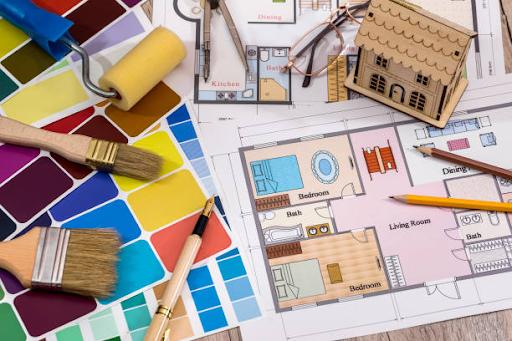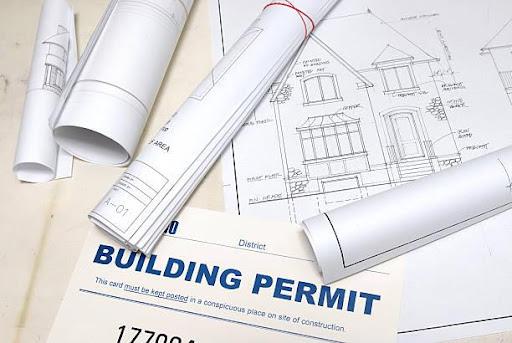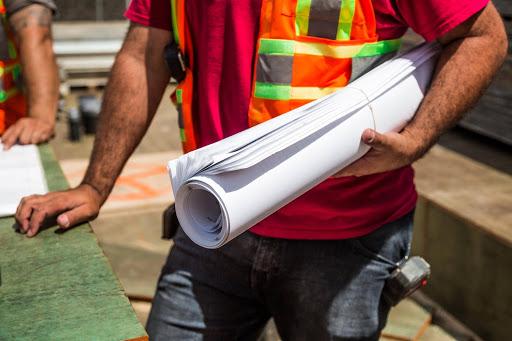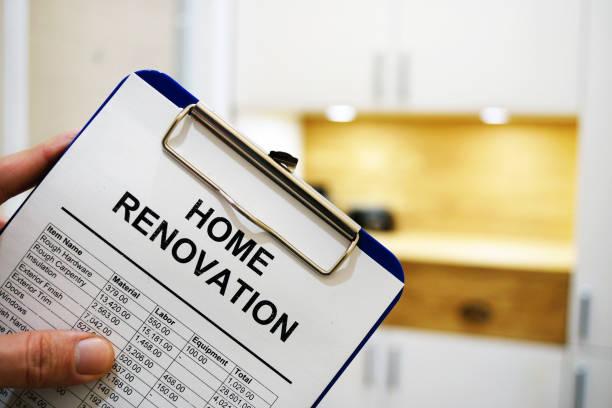Adding to your home can significantly enhance its value and functionality, but careful planning is key to a successful project. Whether you’re considering a room addition, a second story, or expanding your garage, there are several factors to take into account before breaking ground.
In this guide, we’ll cover 10 important things to consider before starting your home addition project. From budget and design to permits and local regulations, these considerations will help you make informed decisions and ensure your project meets both your needs and expectations.
Things To Consider Before Adding To Your Home
1. Put your strategy in place

- Functionality: First, list the primary purposes of each room and space in your house. Prioritize items based on the activities that will take place in each area. For instance, a bedroom must include a cozy bed, clothing storage, and a convenient bedside table.
Consider your home’s size and layout when optimizing your space. Select furniture and other items that will match the room properly.
To increase utility while reducing clutter, choose multi-functional furniture.
- Sustainability: Consider how the products you bring into your home will affect the environment. Choose energy- and equipment, furnishings made of sustainable materials, and goods with less packaging waste. environment-friendly
2. Know your property lines

When considering adding or improving your house, it’s critical to have a firm idea of your property borders.
Even when your property includes your house addition, you should always double-check your property survey to ensure the exact boundary lines. This is an essential precaution because municipal laws probably limit how close you can get to your neighbors’ homes, public roads, or a nearby vacant lot. Although it is beneficial to be aware of these limits before the permitting stage of your project, they will probably become common knowledge when you apply for the permit for your expansion.
ProTip Takeaway: Knowing your property lines can assist you in avoiding intruding on your neighbor’s property and help you avoid future legal issues.
| Consideration | Description |
| Assessing Your Needs and Goals | Identify the purpose and objectives of the addition. |
| Budgeting for the Project | Evaluate and allocate funds for design, materials, and labor. |
| Understanding Zoning and Building Regulations | Research and ensure compliance with local codes. |
| Space and Design Considerations | Assess available space and seamlessly integrate the design. |
| Structural Integrity and Feasibility | Evaluate structural capacity and determine necessary modifications. |
| Timeframe and Project Management | Establish a realistic timeline and plan project stages. |
| Energy Efficiency and Sustainability | Consider greener solutions and sustainable materials. |
| Resale Value and Market Considerations | Assess the impact on home value and market demand. |
| Hiring Professionals and Obtaining Multiple Quotes | Research and select reliable contractors. |
| Future Needs and Flexibility | Design for changing requirements and future needs. |
3. Verify the local building codes

Even though it is your home and your money, you must go by the building codes in your area. Depending on each municipality’s local regulations, you may be able to build up or out with your house addition. Before committing too much to a house addition plan, it is advised that you conduct some research in this area. The age of your property or the location may affect if you have additional regulations placed upon your residence.
Checking and adhering to local building laws and regulations is essential when adding to or changing your property. These regulations, set forth by administrative bodies, guarantee buildings’ functionality, structural integrity, and regional safety. You can use the following procedures to confirm your local building codes:
- Research: Start by looking into your region’s building rules and regulations. Excellent sources of information include municipal authorities, building department offices, and local government websites. Look for relevant laws, such as construction codes, zoning restrictions, permission requirements, etc.
- Consultation with the building department: Speak with your area’s planning or building departments. They can give you detailed information about the conditions needed for your project. They might also advise you on the required licenses, examinations, and paperwork.
- Code Compliance Evaluation: Determine whether your proposed change or addition complies with the applicable local building codes. Consider structural support, electrical and plumbing infrastructure, and HVAC (heating, ventilation, and air conditioning) systems.
4. Choose a qualified builder

It would help to consider several criteria when selecting a skilled builder to make sure you choose wisely. Builders with the appropriate qualifications can execute a variety of construction-related tasks. They are familiar with building codes, safety guidelines, and best practices. Their knowledge guarantees that the job is completed quickly, successfully, and to a high standard.
ProTip Takeaway: Make sure your builder has the necessary insurance and licenses. To Be specific the builder is a Master Builder or Housing Industry Association (HIA) member.
Look into the builder’s previous projects. Were prior clients happy? Before signing a contract, don’t hesitate to ask the builder for references. Additionally, confirm no complaints against the builder you select by contacting the Department of Fair Trading. Further, ensure the service and warranty they provide.
ProTip Takeaway: Take a detailed look at a few previous homes the builder built. Ensure a high standard of quality. I suggest you go to an intelligent modeling company.
5. Look into any subsidies or discounts you may be eligible for
Depending on your region and circumstances, many alternatives regarding subsidies or discounts for home-related expenses are available. Here are some typical locations where you might locate potential deals or subsidies:
Energy Efficiency Tax Credits: There are tax credits available for installing energy-efficient modifications like solar panels, energy-efficient windows, insulation, or HVAC systems in several nations, including the United States.
Utility Rebates: Some utilities provide rebates or incentives for replacing old equipment with energy-efficient models or remodeling your home to use less energy.
ProTip Takeaway: Check with your local government or municipality to see if any local government programs offer financial aid or tax benefits for home modifications, primarily if they are intended to increase accessibility
6. Plan your spending

Budgeting your money and planning for house improvements is a brilliant idea. You can use the following steps to make a strategy and efficiently manage your spending:
- Create a budget: The amount you spend on home additions should be determined. Establish a budget for the project after taking your financial status into account. This will assist you in setting priorities and guiding your selections.
Research and idea gathering Investigate various inspiration sources, such as websites, publications, and social media platforms devoted to home remodeling. Analyze concepts to see if they fit your goals and spending limit. Make a list of the specific products or styles you prefer.
- Decide what you need and order them: List what you want to change or add to your house. Put them in order of importance based on your needs and preferences. Prioritize crucial matters first, then move on to less important ones.
- Review alternatives and prices: As soon as you know what you should opt to
Throughout the process, keep in mind to remain adaptable and flexible. Occasionally, unforeseen events or new chances may present themselves, necessitating modifications to your plan. You’ll be better able to furnish your home and control your expenses if you take the measures outlined below.
7. Consider the functionality of the arrangement
When adding to your home, thinking about functionality and how new furnishings or arrangements will fit into your existing space is crucial. The following general advice will assist you with the procedure:
- Identify your needs: Think about what you want to change or add to your home and how it will improve your life. This will assist you in setting priorities and helping you in deciding what to include.
- Make a layout plan: Consider the available space and how the new addition will blend in with the current design. Make a floor plan and take measurements to help you picture how everything will go together.
- Traffic flow: Consider how the new addition will affect the flow of people through your house.
These suggestions are just guidelines because every home is different. Customizing them to your scenario and tastes is crucial while considering the extra items’ functioning and usefulness.
8. Maximize existing spaces

You may consider several methods while trying to make the most of the space you already have in your home. Here are some ways to help you maximize the area you have available:
- Declutter and organize: Start by clearing any clutter and removing anything you don’t use or need. As a result, there will be more room to facilitate the appropriate organization of the remaining items.
- Utilize vertical space: Install shelves or place organizers on walls to use the available vertical space. This will let you utilize underutilized wall space while keeping stuff off the floor.
- Utilize unused space: Take note of new openings in your home, such as uncomfortable nooks or vacant corners. To make the most of these areas, consider including valuable furniture items, such as storage ottomans or corner shelves.
Choose furniture that serves multiple purposes by choosing multi-functional pieces. For instance, a couch bed that can serve multiple purposes
9. Accommodation changes with time
Depending on the renovation project’s size, you might need to consider how you will live in your home while adding things to your home. The constant weirdness and noise in the compound might be too loud and cause unfavorable conditions for you.
10. Know the rights to govern your stay there or your family
If you’ve planned your building process well, budgeted, and decided on the right builder and lender, you’ll unlikely face any insurmountable tragedies. If there are any mistakes, you can go through several channels for complaints against builders.
When planning a home addition in Houston, there are specific factors to keep in mind:
Weather: Houston has hot, humid summers and mild winters. Choose energy-efficient features to manage the climate.
Neighborhood Regulations: Houston neighborhoods may have HOAs or deed restrictions. Follow guidelines to maintain community harmony.
Flood Zones and Drainage: Research your property’s flood zone status and address drainage to mitigate flooding risks.
Architectural Style: Consider the neighborhood’s architectural character when designing your addition.
Construction and Permitting: Familiarize yourself with Houston’s building codes and obtain necessary permits.
Market Value and Demand: Assess the impact of the addition on your property’s resale value and consider market preferences.
By considering these factors, you can make informed decisions for a successful home addition in Houston.
Are You Ready to add more space to your home?
Evaluate your needs and priorities to ensure that any additions fit your lifestyle and improve your daily experience. The viability and practicality of further reserves will also be determined by assessing your available resources and space. Consider hiring Smart Remodeling LLC for home addition as they will not only offer professional services but also provide guidance and advice on the best approaches and help in the proper planning process.







